Common Trekking Injuries and How to Prevent Them
Discover the most common trekking injuries and how to prevent them. Stay safe on your trek with these expert tips on avoiding blisters, sprains, dehydration, and more.
Table of Contents
ToggleTrekking is an exhilarating way to explore nature and challenge yourself physically, but it also comes with its own risks. Whether you’re trekking through rugged mountain trails or peaceful forests, trekking injuries are always possible, affecting even the most experienced trekkers. Injuries like sprains, fractures, or muscle strains can happen quickly, often when you least expect it. That’s why it’s crucial to prioritize safety, no matter your level of experience.

While it’s easy to assume that seasoned trekkers are immune to injuries, the truth is that accidents can occur if proper precautions are not taken. Even a small misstep or failure to stay hydrated can lead to a serious injury. However, by taking the time to properly prepare for your trek—whether through physical conditioning, choosing the right gear, or learning basic first-aid techniques—you can significantly reduce the risk of trekking injuries.
With a little knowledge, awareness, and thoughtful planning, you can ensure your trekking adventures remain safe and enjoyable.
Common Trekking Injuries and Their Causes
Trekking injuries can vary from minor discomfort to more serious conditions that can hinder your progress or even end your trek early. Understanding the common injuries you might face on the trail, along with their causes and prevention methods, can help you stay safe and enjoy your trek to the fullest. Here are some of the most frequent trekking injuries:
1. Blisters
Blisters are a common trekking injury, caused mainly by friction. When your shoes don’t fit properly, or your feet sweat and rub against the material, the skin can break down, leading to a painful blister. Prolonged walking increases the chance of developing blisters, especially in warm or humid conditions.
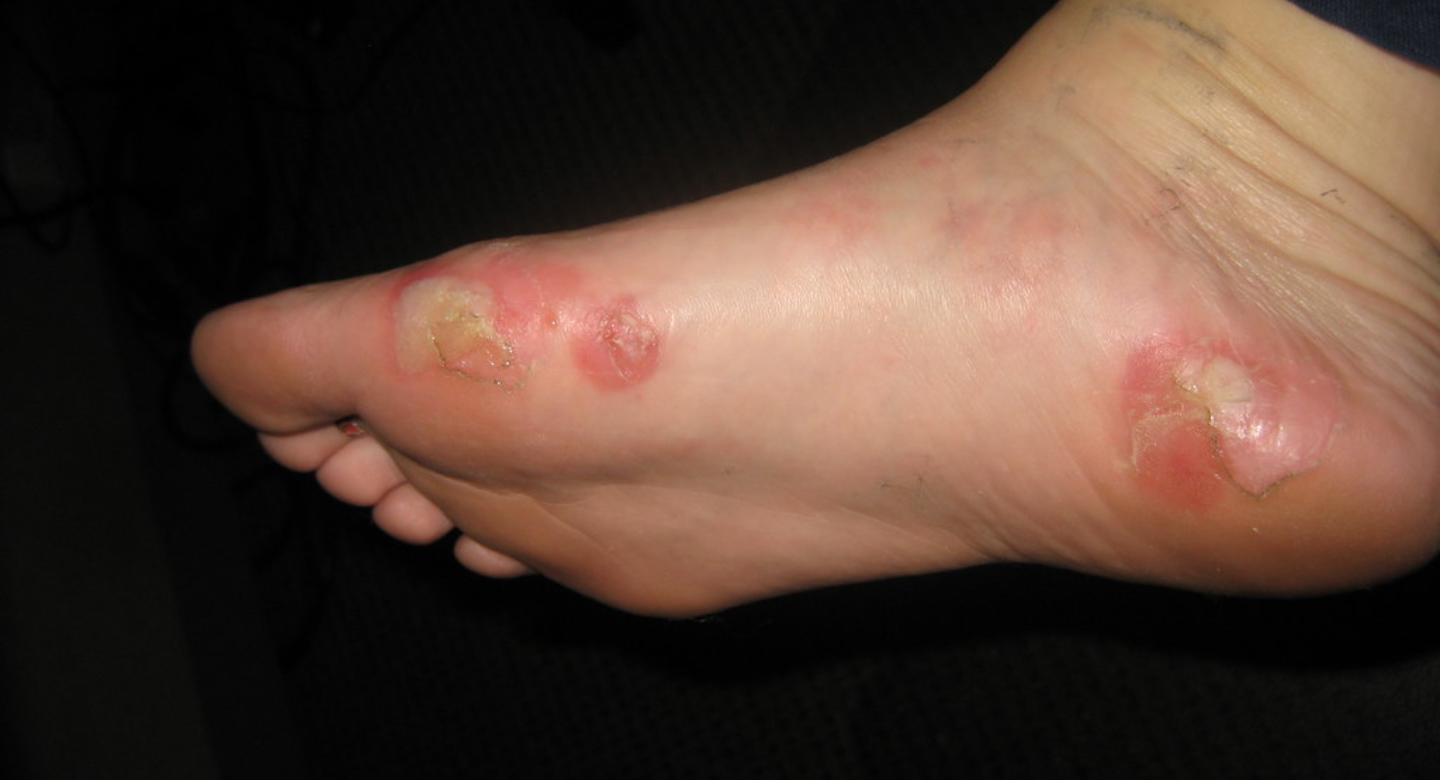
Symptoms:
Blisters appear as red, painful swelling filled with fluid. They can make walking uncomfortable and may even cause more severe pain if they break open.
Prevention Tips:
- Wear well-fitted, moisture-wicking trekking shoes and socks: This helps minimize friction and keeps your feet dry.
- Use anti-chafing balm or blister prevention tape: These can be applied to areas prone to rubbing, offering an extra layer of protection.
- Keep feet dry and change socks if wet: Wet feet are more prone to blisters, so make sure to swap out damp socks during your trek.
2. Sprains and Strains
Sprains and strains often occur due to the uneven and challenging terrain trekkers encounter. A sudden twist of the ankle or a misstep on rocky or slippery ground can lead to sprained ligaments or strained muscles. Weak muscles and poor conditioning can also increase the risk of these injuries.
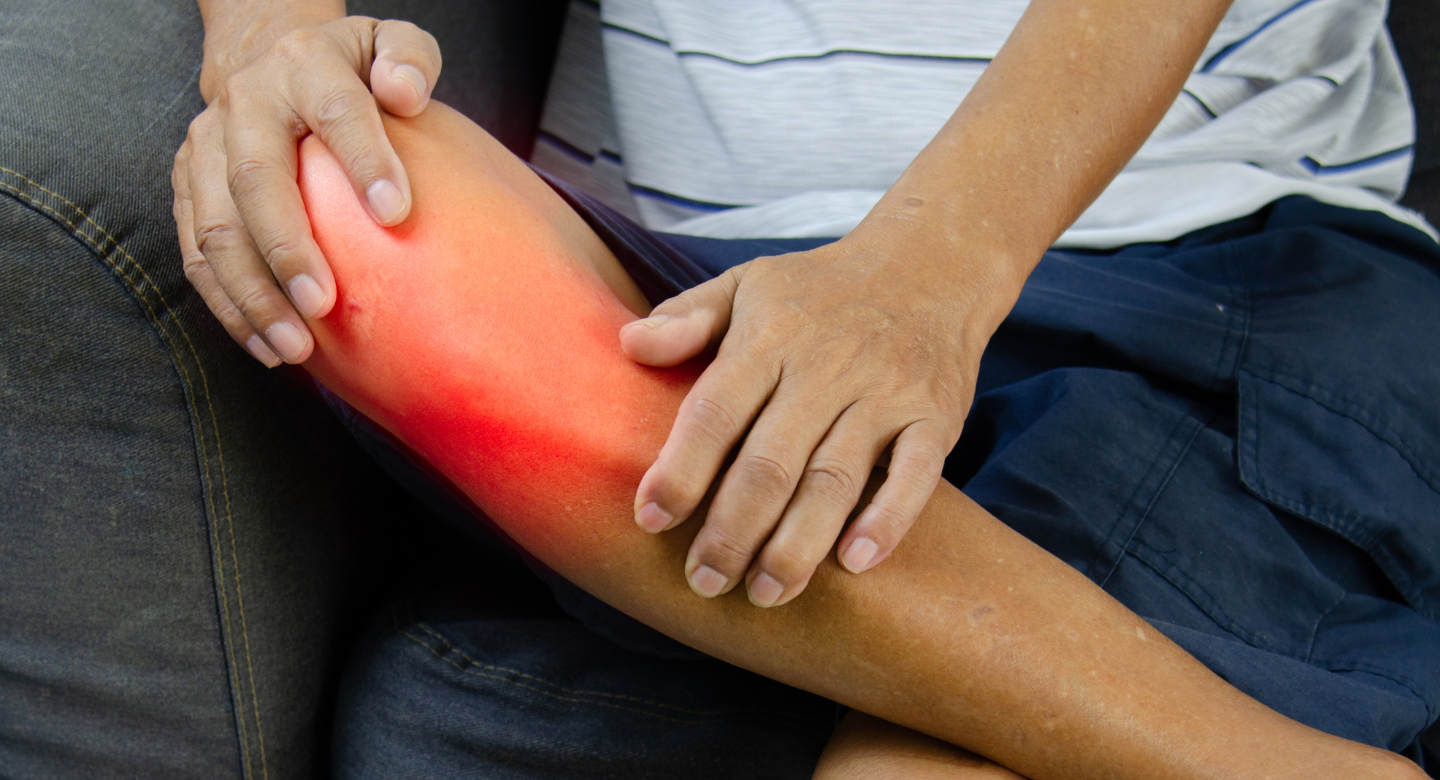
Symptoms:
- Swelling around the affected joint.
- Pain that worsens with movement or pressure.
- Difficulty moving the joint or using the affected limb.
Prevention Tips:
- Strengthen your muscles with exercises like ankle mobility drills and leg strengthening routines. Building up strength and flexibility will help prevent injury.
- Wear proper trekking shoes with ankle support: Trekking shoes designed with ankle support help stabilize your feet and prevent sudden twists.
- Use trekking poles for balance: Poles provide additional support, helping you maintain stability on uneven surfaces.
3. Knee Pain (Hiker’s Knee)
Knee pain, or “hiker’s knee,” is typically caused by continuous downhill trekking, where the knees absorb most of the shock. Weak quadriceps or poor posture while trekking can also contribute to knee strain.

Symptoms:
- Pain around the kneecap, especially when bending or descending.
- Swelling in the knee area.
Prevention Tips:
- Strengthen your leg muscles with exercises like squats, lunges, and leg presses to support the knees.
- Use knee braces or trekking poles: A knee brace can provide extra support, and trekking poles help reduce the load on your knees during descents.
- Take smaller, controlled steps when trekking downhill: Avoid rushing, as large strides put unnecessary pressure on the knees.
4. Dehydration and Heat Exhaustion
Dehydration and heat exhaustion are common trekking injuries that result from inadequate water intake, excessive sweating, or trekking in high temperatures. These conditions can develop quickly, especially if you’re trekking in hot climates or at high altitudes. When your body loses more fluids than it takes in, it becomes dehydrated, making it harder for your body to regulate temperature and function properly.
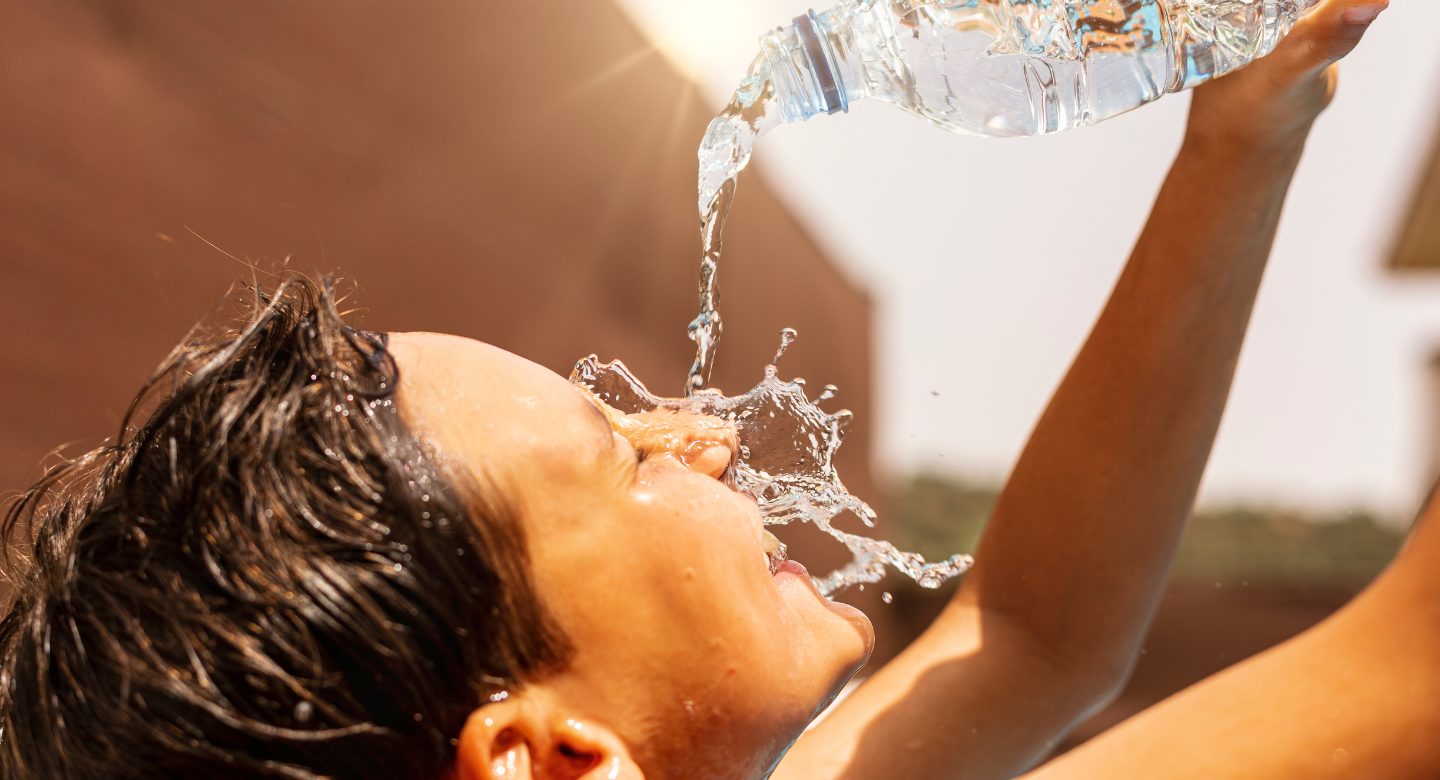
Symptoms:
- Dizziness and lightheadedness.
- Dry mouth and extreme thirst.
- Fatigue or feeling weak.
- Dark urine, which indicates dehydration.
Prevention Tips:
- Drink water frequently: Aim to drink small amounts regularly, especially during long stretches of walking. It’s important to hydrate before you feel thirsty, as thirst can be a late indicator of dehydration.
- Use electrolyte-rich drinks if needed: Electrolytes help replenish minerals lost through sweat and improve hydration. Sports drinks or electrolyte tablets are good options.
- Avoid trekking during peak sun hours: The midday heat can cause your body to overheat quickly. If possible, trek during the cooler early morning or late afternoon hours.
- Wear lightweight, breathable clothing: Clothes made of moisture-wicking materials will help keep sweat off your body and allow for better heat regulation.
5. Hypothermia and Frostbite
Hypothermia and frostbite are cold-related trekking injuries caused by prolonged exposure to cold temperatures, wet clothing, and harsh weather conditions. When trekking in colder climates or during winter, the body can lose heat faster than it can produce it, leading to dangerously low body temperatures. Frostbite, on the other hand, occurs when skin and tissues freeze due to extreme cold.
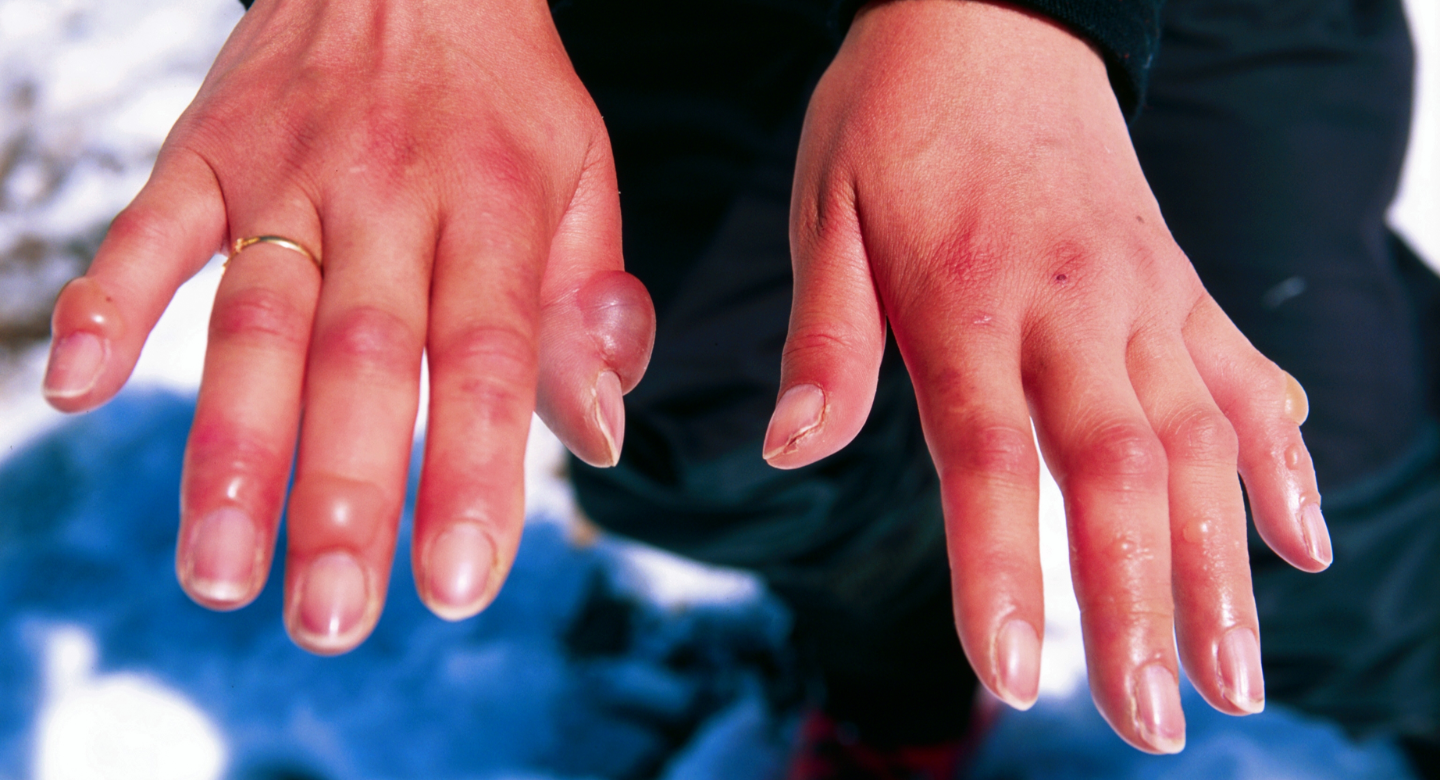
Symptoms:
- Shivering, as your body tries to generate heat.
- Numb fingers or toes, which may become pale or hard to the touch.
- Confusion or difficulty concentrating. In severe cases, unconsciousness may occur.
Prevention Tips:
- Layer clothing appropriately: Start with a moisture-wicking base layer, followed by an insulating layer (like fleece or down), and finish with a waterproof and windproof outer layer. This will help trap heat while keeping out moisture and wind.
- Keep extremities warm: Wear insulated gloves, thick socks, and a hat to protect your fingers, toes, and head, as these are most vulnerable to frostbite.
- Avoid staying wet for long periods: Wet clothing, especially from sweat or rain, can accelerate heat loss. Make sure to dry off and change into dry clothes if you get wet. Consider carrying extra clothes in case of emergency.
6. Altitude Sickness (Acute Mountain Sickness – AMS)
Altitude sickness occurs when you ascend to high altitudes too quickly, without giving your body enough time to adjust. As you gain altitude, the air becomes thinner, reducing the amount of oxygen available. If you don’t allow your body to acclimatize, it can lead to symptoms of AMS. This condition is most common above 2,500 meters (8,200 feet) and can worsen if you continue to climb without proper rest.
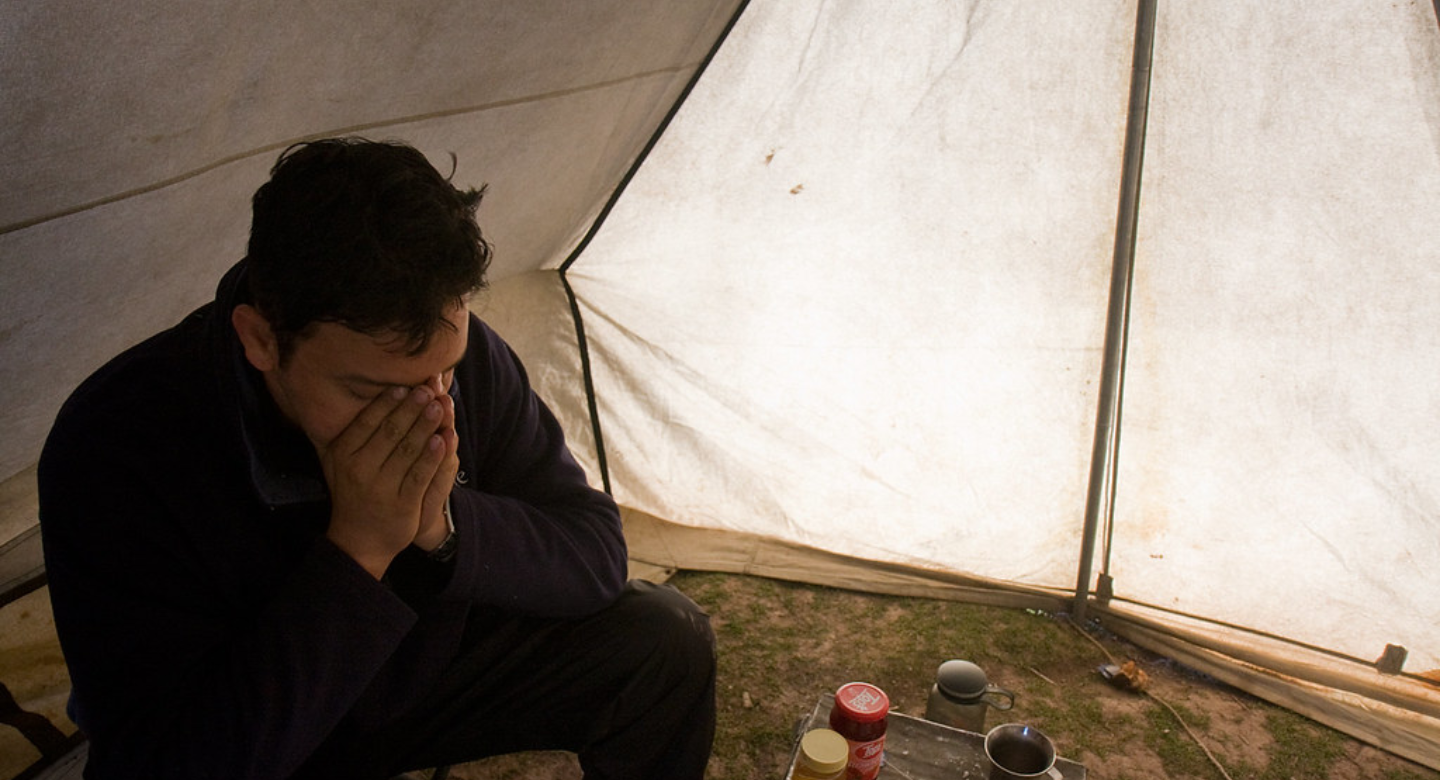
Symptoms:
- Headache that worsens with altitude.
- Nausea and vomiting.
- Dizziness and lightheadedness.
- Breathlessness even at rest or with minimal activity.
Prevention Tips:
- Acclimatize gradually: Follow the rule of “climb high, sleep low.” This means that you should spend extra days at intermediate elevations to allow your body time to adjust to the higher altitude.
- Stay hydrated and avoid alcohol: Drinking plenty of water helps your body cope with the thinner air. Alcohol can worsen dehydration and hinder acclimatization.
- Carry Diamox (after consulting a doctor): Diamox is a medication that can help prevent and alleviate symptoms of AMS. Always consult with a healthcare professional before using it.
7. Cuts, Scrapes, and Insect Bites
Trekking often takes you through rugged, untamed terrain where thorns, rocks, and wildlife are common. Scrapes and cuts can happen when you brush against sharp objects or fall. Insect bites, particularly from mosquitoes or ticks, are also common, especially in areas with dense vegetation or near water sources. These bites can sometimes lead to irritation or infections if not properly treated.

Symptoms:
- Open wounds from cuts or scrapes.
- Irritation, redness, or swelling around the affected area.
- Increased risk of infection if the wound is not cleaned properly.
- Itching or rashes from insect bites.
Prevention Tips:
- Wear long trekking pants and sleeves: This helps protect your skin from both sharp objects and insects.
- Carry a basic first-aid kit: Include essentials like antiseptic wipes, bandages, and gauze to treat cuts and scrapes immediately.
- Apply insect repellent: Use a DEET-based repellent to keep insects, particularly mosquitoes, ticks, and other biting insects, at bay.
Essential Trekking Injury Prevention Tips
Preventing trekking injuries starts long before you hit the trail. By taking the right precautions and preparing adequately, you can minimize your risk of injury and make your trek a safer and more enjoyable experience. Here are some essential tips for injury prevention:
1. Choose the Right Footwear and Break Them In Before Trekking

Your choice of footwear plays a significant role in preventing injuries such as blisters, sprains, and strains. Make sure you invest in high-quality trekking shoes that offer proper support and are suited to the terrain you’ll be hiking on. Whether you need hiking boots for rugged terrain or lightweight shoes for easier trails, ensure they fit well and provide ample cushioning.
Tip: Break your shoes in before you go trekking. Wear them on shorter walks or hikes to soften them up and avoid painful blisters.
2. Pack a First-Aid Kit with Essentials
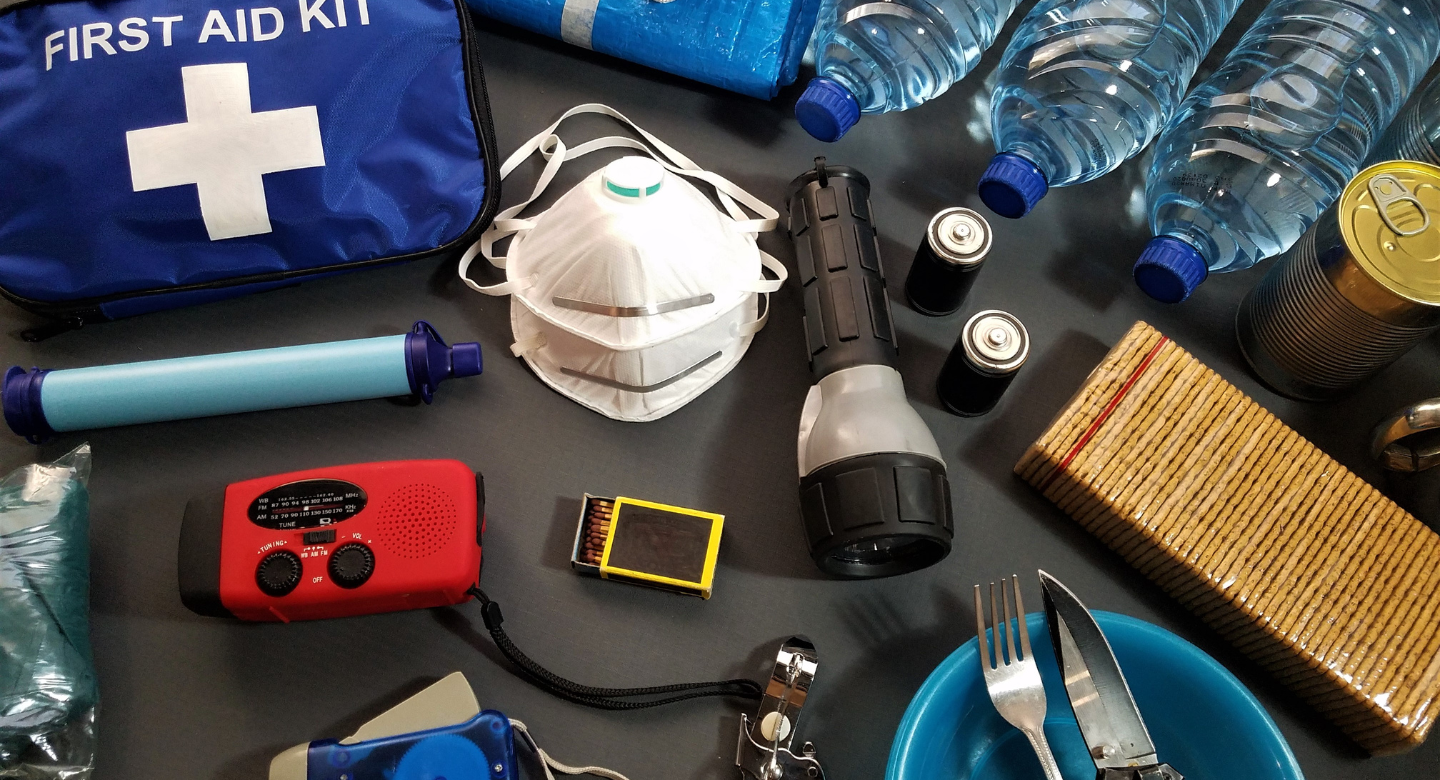
No matter how well-prepared you are, accidents can still happen. Having a well-stocked first-aid kit is vital in treating minor injuries or discomfort on the trail. Include essentials such as bandages, antiseptic wipes, pain relievers, blister treatment, and any personal medication you might need.
Tip: Familiarize yourself with basic first-aid procedures, so you know how to properly treat injuries such as cuts, sprains, or blisters.
3. Train Before Trekking – Focus on Endurance, Strength, and Flexibility

Proper training is crucial to prepare your body for the physical demands of trekking. Focus on building endurance through long walks or cardio exercises, strengthening your muscles, especially your legs, core, and ankles, and improving flexibility with stretches. This will make your muscles and joints more resilient, reducing the risk of sprains, strains, and fatigue-related injuries.
Tip: Incorporate exercises like lunges, squats, calf raises, and balance exercises into your training routine to build strength and prevent injuries.
4. Follow Proper Trekking Techniques
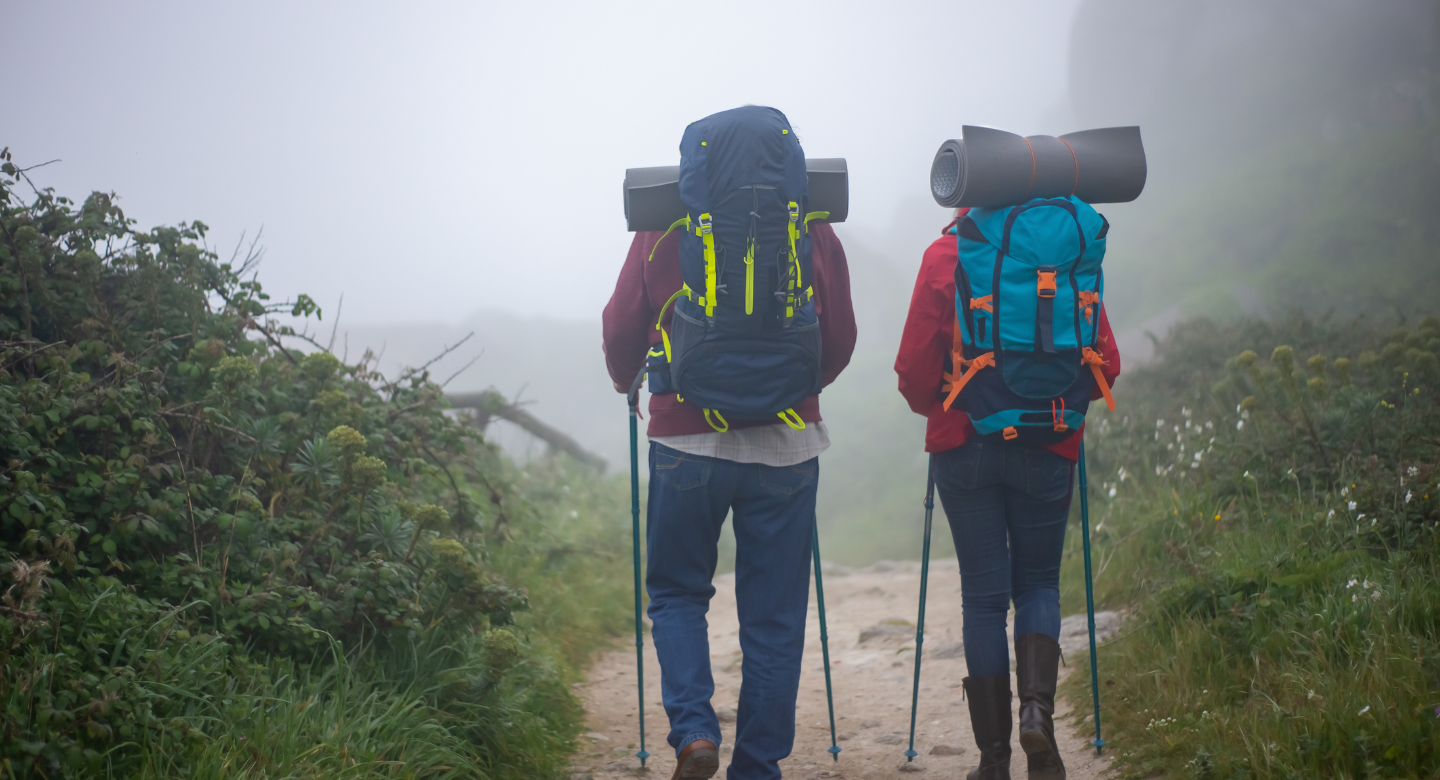
Using the correct trekking techniques can help reduce strain on your body and prevent injuries. Focus on maintaining good posture while walking—keep your back straight and your core engaged. When trekking downhill, take smaller, controlled steps to minimize impact on your knees and joints.
Tip: Use trekking poles to assist with balance and reduce the load on your knees, especially during descents.
5. Listen to Your Body – Rest When Needed
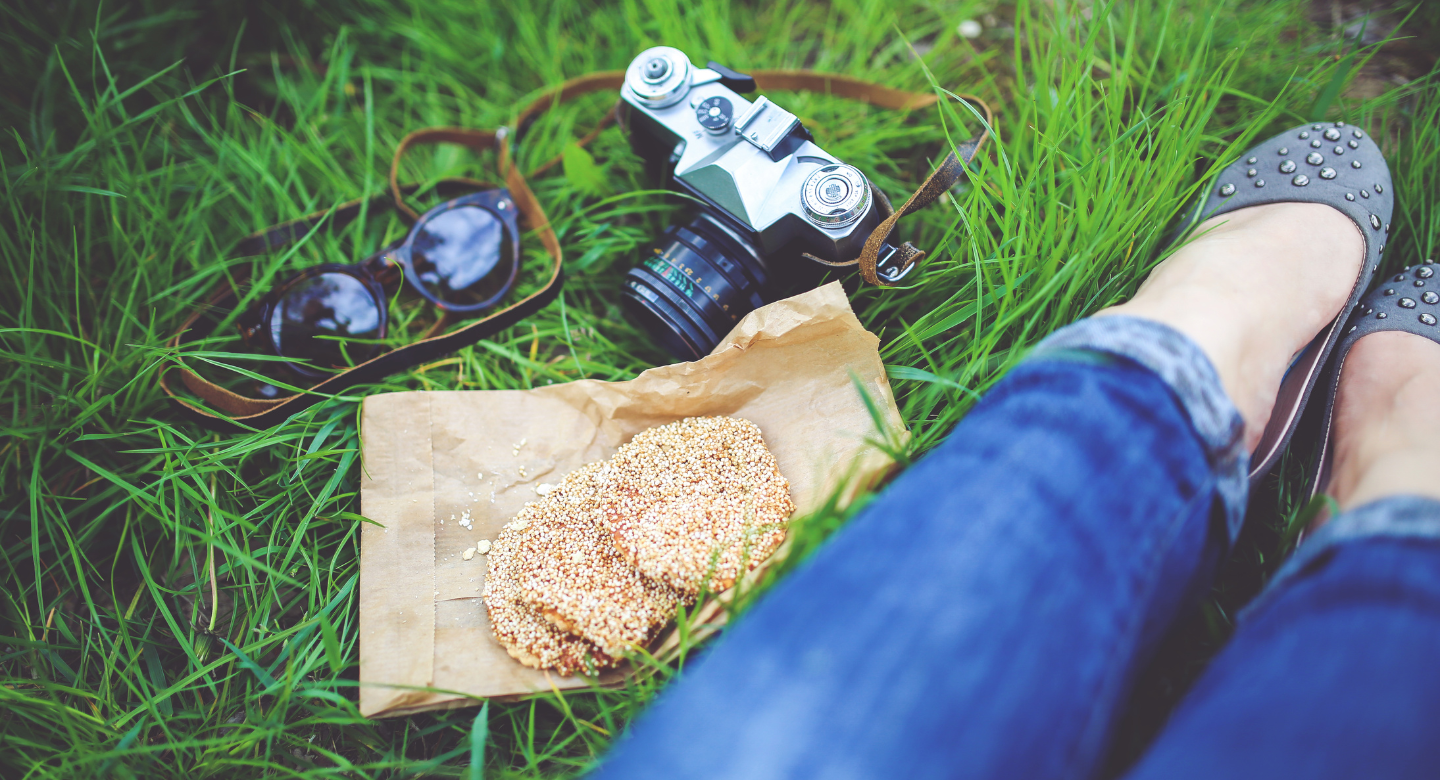
One of the simplest yet most effective injury prevention strategies is listening to your body. If you’re feeling fatigued, dizzy, or in pain, it’s important to rest and allow your body to recover. Pushing through pain or exhaustion can lead to more severe injuries, so don’t hesitate to take breaks when needed.
Tip: Regularly check in with yourself during the trek—if you feel any discomfort, take it easy and address the issue before it becomes a serious injury.
6. Stay Informed About the Weather and Terrain Before the Trek

Before setting out, check the weather forecast and understand the terrain you’ll be trekking on. Sudden weather changes, such as rain or extreme temperatures, can affect the trail conditions and increase the risk of slips, falls, or dehydration. Being prepared for the weather will help you make informed decisions about what gear to bring and when to hike.
Tip: Adjust your plans if the weather looks unfavorable—consider trekking during safer hours or postponing the trip if necessary.
What to Do If You Get Injured While Trekking?
Injuries can happen at any time while trekking, but knowing how to respond can make a big difference in managing the situation. Whether it’s a minor scrape or a more serious injury, being prepared and knowing what steps to take can help you handle the situation effectively. Here’s what you should do if you get injured while trekking:
1. For Minor Injuries: Clean Wounds, Rest, and Apply Ice Packs if Needed
Minor injuries like cuts, scrapes, or small bruises are common on the trail. While they may seem trivial, it’s important to treat them promptly to avoid infection and further complications.

Steps to Take:
- Clean the wound: Use clean water or antiseptic wipes to gently clean the injury. If you have an antiseptic solution or ointment in your first-aid kit, apply it to the wound to prevent infection.
- Rest: Take a break and avoid using the affected area to prevent further strain.
- Apply ice packs: If you’re experiencing swelling or bruising, apply ice to the injury. This can help reduce inflammation and numb the pain. Wrap the ice pack in a cloth to avoid direct contact with your skin.
- Tip: Always carry a basic first-aid kit with antiseptic wipes, bandages, and gauze to treat minor injuries quickly and efficiently.
2. For Sprains: RICE Method (Rest, Ice, Compression, Elevation)
Sprains and strains are common trekking injuries, especially when navigating uneven terrain. The RICE method is a widely used first-aid approach to manage sprains and strains. It helps reduce swelling and pain, promoting faster healing.
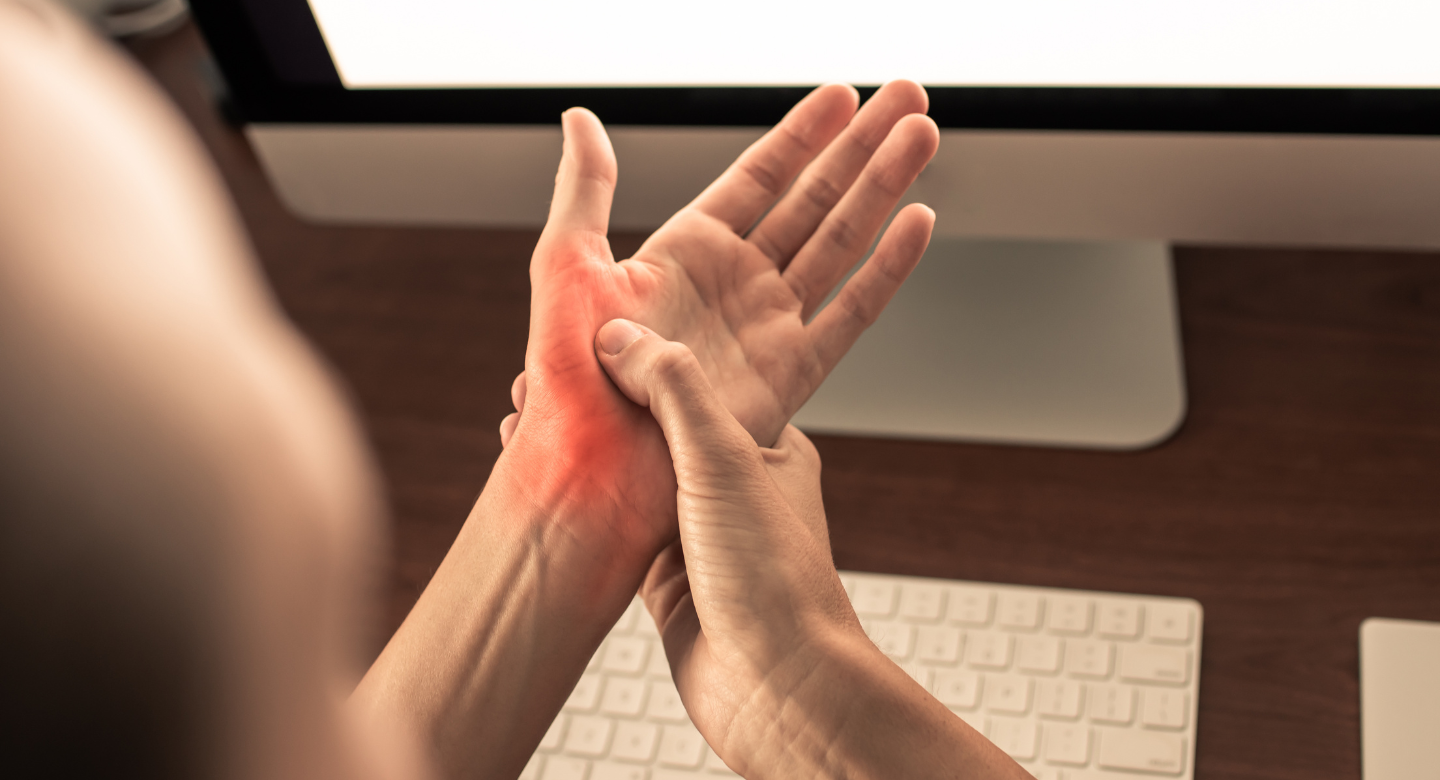
Steps to Take:
- Rest: Stop using the affected limb or joint immediately. Avoid putting weight on it to prevent further damage.
- Ice: Apply ice or a cold compress to the injured area for 15-20 minutes every 2-3 hours. This helps reduce swelling and numb the pain.
- Compression: Use a bandage or wrap to gently compress the injured area. Be careful not to wrap it too tightly, as this can cut off circulation.
- Elevation: Elevate the injured limb above the level of your heart if possible. This helps reduce swelling by promoting the flow of fluids away from the injured area.
- Tip: If you have trekking poles, you can use them to assist with balance and reduce pressure on the injured joint while continuing to trek.
3. For Serious Injuries: Seek Medical Help or Signal for Rescue
For more serious injuries like fractures, deep wounds, head trauma, or severe sprains, immediate medical attention is necessary. In such cases, it’s important to stay calm and assess the situation.

Steps to Take:
- Assess the injury: If you suspect a fracture or serious injury, do not try to move the injured area. Keep it immobilized to prevent further damage.
- Seek medical help: If you’re trekking in a group, alert others and seek help. If you’re solo trekking, find a safe spot to wait for assistance, and use your mobile phone to call for help if you have reception.
- Signal for rescue: In areas with no phone signal, you may need to signal for help. Use a whistle, bright clothing, or a flashlight to make yourself visible to others.
- Stay calm: Keep calm to avoid shock, and try to reassure yourself or fellow trekkers while waiting for help.
- Tip: Always inform someone about your trekking route and expected return time before you set out. This ensures that someone can alert authorities if you don’t return on schedule.
Conclusion on Common Trekking Injuries and How to Prevent Them
Preventing trekking injuries is all about proper preparation and staying aware of your body and surroundings. Whether you’re a seasoned trekker or a beginner, taking the time to train, wear the right gear, and follow safety tips can significantly reduce your risk of injury. Being prepared for common trekking injuries, knowing how to respond in case of an emergency, and practicing good techniques on the trail will help ensure that your adventure remains enjoyable and safe.
Always prioritize safety on your treks, no matter how experienced you are. Make sure you’re equipped with the right gear, have a solid first-aid kit, and stay informed about the terrain and weather conditions. Trekking injuries can happen to anyone, but with the right precautions in place, you can greatly reduce the chances of them affecting your journey. Have you faced any trekking injuries? Share your experience in the comments!
Frequently Asked Questions (FAQs) on Common Trekking Injuries and How to Prevent Them
What are the most common trekking injuries?
The most common trekking injuries include blisters, sprains and strains, knee pain (hiker’s knee), dehydration, heat exhaustion, hypothermia, frostbite, altitude sickness, and cuts or insect bites.
How can I prevent blisters while trekking?
To prevent blisters, wear well-fitted trekking shoes and moisture-wicking socks, apply blister prevention tape to prone areas, and keep your feet dry by changing socks if they become wet.
What should I do if I sprain my ankle while trekking?
Use the RICE method: Rest, Ice, Compression, and Elevation. This will help reduce swelling and pain. If the injury is severe, seek medical assistance as soon as possible.
How can I prevent altitude sickness while trekking at high elevations?
To prevent altitude sickness, acclimatize gradually, staying at a lower altitude for 24–48 hours before ascending higher. Drink plenty of water, avoid alcohol, and consult a doctor about using medications like Diamox if needed.
What is the best way to treat minor cuts or scrapes while trekking?
Clean the wound with water or antiseptic wipes, apply an antiseptic ointment, and cover it with a bandage. Keep an eye on it to avoid infection.
How can I avoid knee pain while trekking?
Strengthen your leg muscles through exercises like squats and lunges, use trekking poles for added support, and take smaller, controlled steps, especially while descending.
Is it safe to trek if I’m feeling dehydrated?
No. Dehydration can lead to heat exhaustion and other serious conditions. Always carry enough water and drink regularly. In hot climates, consider carrying electrolyte drinks to maintain hydration balance.
What are the signs of heat exhaustion, and how can I prevent it?
Signs of heat exhaustion include dizziness, fatigue, nausea, and dry mouth. To prevent it, drink plenty of water, avoid trekking during peak sun hours, and wear lightweight, breathable clothing.
What should I do if I get frostbite or hypothermia while trekking in cold weather?
If you experience signs of frostbite (numbness, pale skin) or hypothermia (shivering, confusion), get to a warmer area immediately. Remove wet clothing, warm up slowly, and seek medical help as soon as possible.
How can I ensure I am properly prepared for a trekking trip to avoid injuries?
Train before your trek by focusing on endurance, strength, and flexibility. Wear the right footwear, pack a first-aid kit, and stay informed about weather and terrain conditions. Always listen to your body and rest when needed.


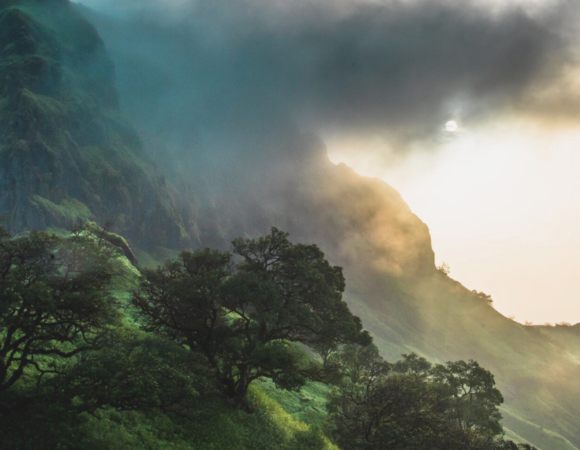
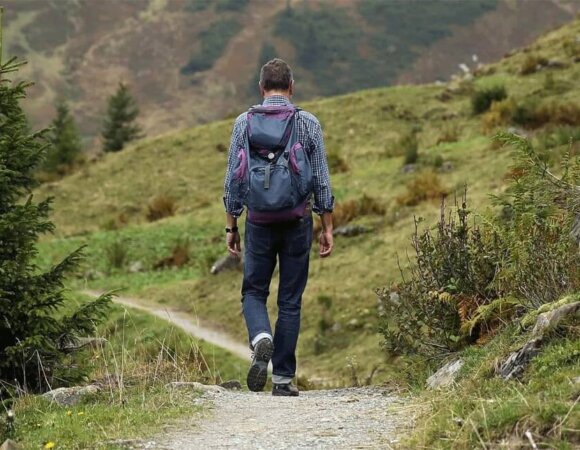
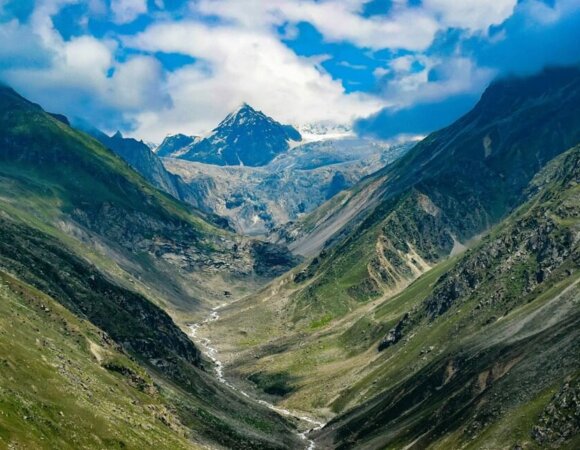
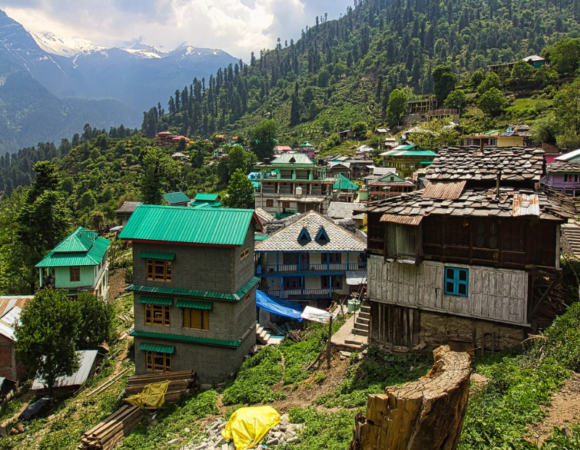
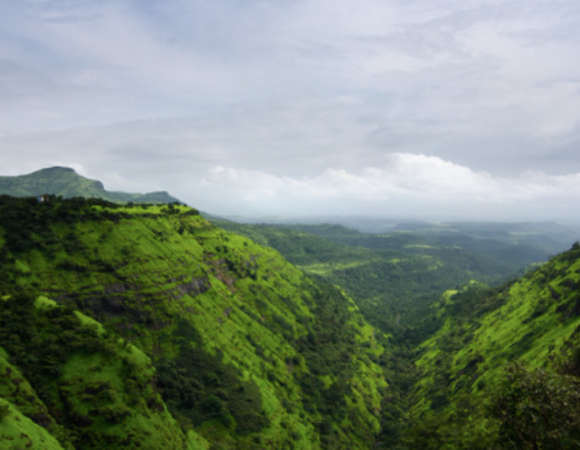
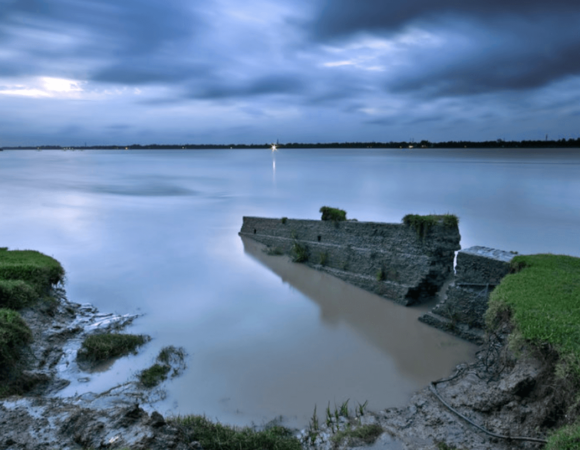
[…] Common Trekking Injuries and How to Prevent ThemBlisters and Foot Care: How to Keep Your Feet Happy on a TrekHow to Deal with Muscle Cramps and Fatigue While Trekking […]